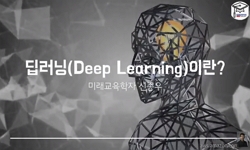C-spine MRI has excellent contrast and resolution for soft tissue, and is primarily used for neurological diseases such as degenerative diseases in the cervical region and stenosis of the intervertebral space, myelitis, and intervertebral disc herniat...
http://chineseinput.net/에서 pinyin(병음)방식으로 중국어를 변환할 수 있습니다.
변환된 중국어를 복사하여 사용하시면 됩니다.
- 中文 을 입력하시려면 zhongwen을 입력하시고 space를누르시면됩니다.
- 北京 을 입력하시려면 beijing을 입력하시고 space를 누르시면 됩니다.

딥러닝 기반 인공지능 기법을 활용한 경추 MRI 검사의 유용성 평가 = Usefulness Evaluation of C-Spine MRI Using Deep Learning-Based Artificial Intelligence Techniques
한글로보기부가정보
다국어 초록 (Multilingual Abstract)
C-spine MRI has excellent contrast and resolution for soft tissue, and is primarily used for neurological diseases such as degenerative diseases in the cervical region and stenosis of the intervertebral space, myelitis, and intervertebral disc herniation. However, due to neurological diseases reducing SNR, C-spine MRI examination has the disadvantage of enhancing the intensity of the background signal. Increasing the number of excitations to compensate for this results in longer examination time. When conducting C-spine MRI examination due to traffic accidents or falls, the optimal image can be obtained only when breathing and movement caused by pain are minimized; hence, the active cooperation of patients is required, and examination time needs to be reduced to produce diagnostic images without artifacts. Fortunately, the recently developed SwiftMR artificial intelligence software can dramatically reduce C-spine MRI examination time. SNR of sagittal T2WI, axial T2WI, sagittal T1WI and axial T1WI SwiftMR images were measured as vertebra body 223.82 ± 30.82, spine cord 273.03 ± 32.38, and spines and transverse process 378.61 ± 27.64. The SNR of the turbo spin echo technique was measured as vertebra body 116.51 ± 11.46, spine cord 182.1 ± 22.24, and spines and transverse process 227.79 ± 35.55. The CNR of the turbo spin echo technique was measured as 182.12 ± 13.24 and the CNR of the SwiftMR technique was measured as 346.8 ± 41.84. Through images applied with turbo spin echo and SwiftMR artificial intelligence software, the K value was evaluated as 0.87 with respect to the consistency of image quality clarity, signal strength uniformity, and lesions between observers of artifacts around the vertebra body. The results thus indicate that C-spine MRI examination time can be shortened by applying the SwiftMR artificial intelligence technique, minimizing patient inconvenience and providing diagnostic quality image information.
동일학술지(권/호) 다른 논문
분석정보
연관 공개강의(KOCW)
-

[제18회 김옥길기념강좌] 인공지능, 감정, 휴머니즘(Human-Compatible Artificial Intelligence’)’
이화여자대학교 스튜어드 러셀 -

딥러닝(Deep Learning)이란
신한대학교 신종우 -

누구나 할 수 있는 데이터 분석과 인공지능[Data Analysis and Artificial Intelligence for Everyone]
K-MOOC 인하공업전문대학 이세훈 -

비전공자를 위한 AI 딥러닝(Deep Learning)
K-MOOC 한국과학기술원 오종훈 -

비전공자를 위한 AI 딥러닝(Deep Learning)
K-MOOC 한국과학기술원 오종훈




 코리아스칼라
코리아스칼라

